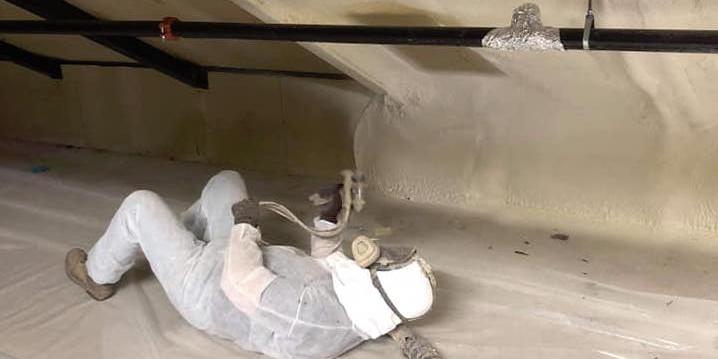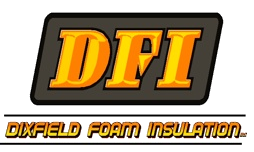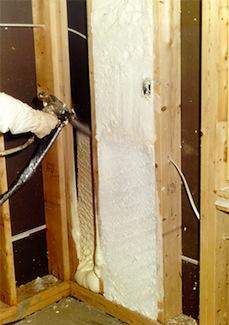
Because the only thing worse than air leakage is heat transmission. Insulation conserves energy, increases comfort, and saves money, by keeping your hard earned heat inside. Find out how.
I. Insulation is one of your home's first defenses against wasteful energy spending. According to the Department of Energy, 50%-70% of the energy used in the average American home goes toward heating and cooling. That means you've got big (huge!) potential for savings by increasing your home's capacity to keep out either the summer heat or the winter cold, by improving your home's building envelope. The envelope is basically the sum total of everything that shields your home from the elements: paint, siding, framing, insulation, windows, doors, shingles, bricks, etc. Although none of these components can be viewed in total isolation, (an Energy Star certified window won't do you much good if you have string-beads hanging in your front doorway), insulation is an important part of the envelope. Inadequate (or absent) wall, ceiling and floor insulation can lead to massive energy waste.
II. The Basics. When we talk apples, we talk crisp and firm. When we talk insulation, we talk R-Value. So what IS R-Value? R-Value is the measure of an object's thermal resistance (how well it prevents heat from moving through it). Insulation is rated according to R-Value this way: the greater the thermal resistance, the higher the R-value, the better the insulation. To give you an idea: standard fiberglass insulation has an R-value of 3.14 per inch. A wall in Montana should have an R-value of about 18. So that's about six inches of fiberglass insulation. For comparison, an attic in Alaska should be about R60, and a floor in the Virgin Islands should be about R13. Most attics should be above R38. What constitutes an adequate, cost-effective R-value for your house depends on the part of the country and the climate you're in.
Something to think about: Most single-family homes lose 3-6 times as much heat through transmission – as a result of insufficient insulation in floors, walls, ceiling or roof - as through air leakage. [FN Krigger, Residential Energy, p.101. Saturn Resource Management Inc., 2004]
III. Bulk up your building envelope.
1. Evaluate your needs. We strongly recommend a home energy audit conducted by a certified professional. A quick look with an infrared camera during an energy audit will reveal the areas where heat is escaping your house, which signifies either an air sealing problem or inadequate insulation.
2. Make sure you are wearing a hat. This you can do on your own. Hot air rises. That means the attic is one of the most important parts of your home in terms of controlling heat loss. A simple way to make sure you are covered: pop your head up into the attic. If you can see floor joists, you need more insulation. If all you see is insulation, check how many inches deep it is. If your attic has a floor, pop up a board and do the same. Multiply that number by 3, and you'll have a very loose approximation of the R-value. An adequate R-value will differ depending on where you live, but should be somewhere between 30 and 60 . If your figure comes up short, you might consider adding insulation. Remember, too, that the insulation should be level and evenly distributed, without any gaps or holes; humps, bumps and low spots can compromise the whole system. And even if you have two feet of of high-quality fiberglass, a couple gaps for air leakage could reduce your R-value a lot, in addition to carrying unwanted moisture up into the attic. So make sure the attic floor is very well sealed before adding any insulation.



